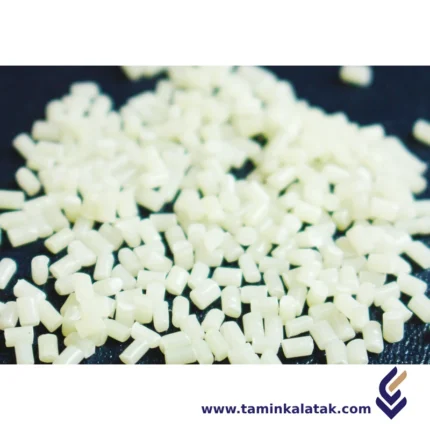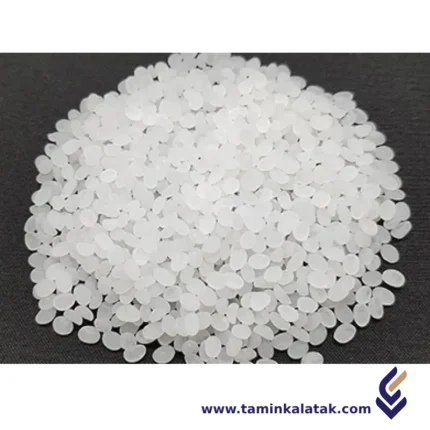Anti-UV Masterbatch
Anti-UV Masterbatch is a specialized additive used in plastic manufacturing to enhance the UV resistance of polymer-based products. It consists of ultraviolet (UV) stabilizers and absorbers dispersed in a carrier resin, making it easier to incorporate into plastic during processing.
StructureThe structure of an anti-UV masterbatch consists of a combination of UV stabilizers, a carrier resin, and sometimes additional additives to enhance performance. The UV stabilizers, which can include UV absorbers and hindered amine light stabilizers (HALS), are the active components that protect plastics from degradation by absorbing or neutralizing harmful ultraviolet radiation. These stabilizers are uniformly dispersed within a carrier resin, which is typically the same or compatible with the final polymer to ensure easy blending during processing. The carrier resin acts as a medium that holds and delivers the UV stabilizers into the plastic matrix. Depending on the application, other additives such as antioxidants, processing aids, or heat stabilizers may be included to improve the overall durability of the final product. The masterbatch is typically produced in pellet or granular form, allowing for uniform distribution when mixed with base polymers during the manufacturing process.
PropertiesAnti-UV masterbatch possesses several key properties that enhance the durability and performance of plastic products exposed to sunlight. It effectively absorbs and dissipates ultraviolet radiation, preventing polymer degradation, discoloration, and brittleness. The masterbatch is designed to be thermally stable, ensuring that it can withstand high processing temperatures without losing its effectiveness. It is highly compatible with various polymers, including polyethylene, polypropylene, PVC, and ABS, allowing for easy incorporation into different plastic formulations. The dispersion quality is crucial, ensuring uniform distribution of UV stabilizers within the polymer matrix to achieve consistent protection. Additionally, anti-UV masterbatch can be tailored to specific applications by combining different types of UV stabilizers, such as UV absorbers and hindered amine light stabilizers (HALS), for comprehensive protection. It also maintains the mechanical properties of plastics over time, reducing surface cracking and extending the lifespan of products used in outdoor or high-exposure environments.
Applications
- Agricultural films, such as greenhouse covers and mulch films, to protect crops from UV damage.
- Outdoor furniture and construction materials, including pipes, sheets, and roofing, to prevent weathering and brittleness.
- Automotive plastic parts, such as dashboards and exterior trims, to resist sun-induced fading and cracking.
- Packaging materials, especially for products sensitive to UV exposure, such as food and pharmaceuticals.
- Electrical and electronic components, ensuring longer durability for plastic casings exposed to sunlight.
- Textile fibers and synthetic fabrics, improving UV resistance in outdoor clothing and industrial fabrics.
Advantages
- Protects plastics from UV-induced degradation, extending product lifespan.
- Reduces discoloration, brittleness, and surface cracking in exposed plastic materials.
- Enhances thermal stability, making it suitable for high-temperature processing.
- Compatible with various polymers, allowing flexibility in application.
- Cost-effective solution compared to using inherently UV-resistant polymers.
Disadvantages
- May slightly alter the color or transparency of clear plastic products.
- Effectiveness depends on the concentration and type of stabilizer used.
- Higher costs compared to non-UV-stabilized plastic formulations.
- Prolonged exposure to extreme UV conditions may still lead to gradual degradation over time.
Antioxidant Masterbatch
Antioxidant masterbatch is an additive used in plastic processing to protect polymers from thermal and oxidative degradation during manufacturing and throughout the product's lifespan. It consists of antioxidants dispersed in a carrier resin, allowing easy incorporation into various plastic materials. Antioxidants prevent polymer degradation caused by exposure to heat, oxygen, and mechanical stress, which can lead to brittleness, discoloration, and loss of mechanical properties.
Structure Antioxidant masterbatch
The structure of antioxidant masterbatch consists of a combination of antioxidants, a carrier resin, and sometimes additional stabilizers to enhance its effectiveness. The antioxidants, which can be primary (phenolic) or secondary (phosphite or thioester-based), work by neutralizing free radicals and decomposing peroxides that cause polymer degradation. These active components are uniformly dispersed within a carrier resin, which is selected based on compatibility with the target polymer to ensure smooth blending during processing. The carrier resin, often polyethylene (PE), polypropylene (PP), or another polymer-specific base, acts as a medium that facilitates even distribution of antioxidants throughout the plastic material. Depending on the application, the masterbatch may also contain synergistic additives like UV stabilizers or processing aids to provide comprehensive protection against thermal and oxidative degradation. Produced in pellet or granular form, antioxidant masterbatch is designed for easy incorporation into plastic formulations, improving the stability and longevity of the final product.Properties Antioxidant masterbatch
Antioxidant masterbatch possesses several key properties that enhance the stability and durability of plastics during processing and throughout their lifespan. It provides excellent thermal stability, preventing polymer degradation caused by high temperatures during extrusion, injection molding, and other manufacturing processes. The masterbatch also offers strong oxidation resistance, protecting plastics from the harmful effects of exposure to oxygen, which can lead to discoloration, brittleness, and loss of mechanical properties. It is highly compatible with various polymers, including polyethylene (PE), polypropylene (PP), polyvinyl chloride (PVC), and acrylonitrile butadiene styrene (ABS), ensuring easy dispersion and uniform protection. Additionally, it enhances processing efficiency by reducing melt viscosity fluctuations, preventing gel formation, and maintaining the integrity of the plastic material. The presence of synergistic blends of primary and secondary antioxidants further improves its effectiveness, offering long-term stability and enhanced resistance to degradation in applications exposed to heat, mechanical stress, or prolonged storage conditions.Applications of Anti-UV Masterbatch
- Agriculture: Used in greenhouse films, mulch films, and irrigation pipes to prevent UV degradation and extend lifespan.
- Packaging: Protects plastic packaging materials from UV-induced weakening, ensuring product safety and durability.
- Automotive: Applied in plastic components like dashboards, bumpers, and exterior trims to prevent fading and cracking.
- Construction: Used in outdoor plastic products such as roofing sheets, pipes, and synthetic wood to withstand prolonged sun exposure.
- Textile and Fibers: Enhances UV resistance in synthetic fabrics, geotextiles, and outdoor banners to prevent fading and degradation.
- Electrical and Electronic Components: Ensures longevity of plastic casings and insulation materials exposed to sunlight.
Advantages of Anti-UV Masterbatch
- Protects plastics from UV-induced degradation, extending product lifespan.
- Prevents discoloration, brittleness, and surface cracking in outdoor and exposed plastic products.
- Enhances thermal stability, making plastics more resistant to high temperatures.
- Compatible with a wide range of polymers, allowing for versatile applications.
- Cost-effective solution compared to using inherently UV-resistant polymers.
- Easy to incorporate into plastic formulations, ensuring uniform distribution.
Disadvantages of Anti-UV Masterbatch
- May slightly alter the color or transparency of clear plastic products.
- Effectiveness depends on the concentration and type of UV stabilizer used.
- Can increase production costs compared to non-UV-stabilized plastics.
- Prolonged exposure to extreme UV conditions may still lead to gradual degradation over time.
- Some UV stabilizers may have limited efficiency under very high-temperature conditions.








